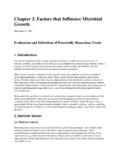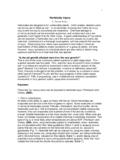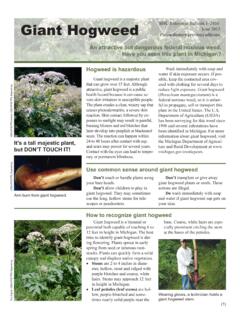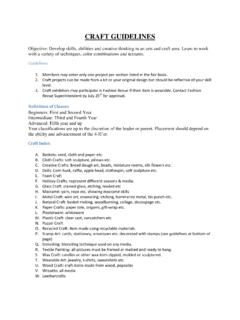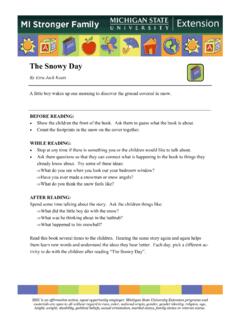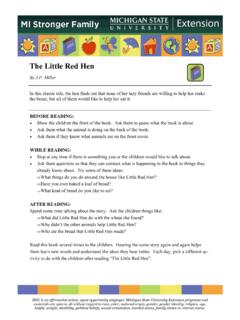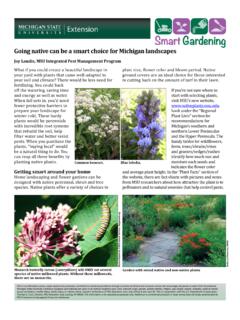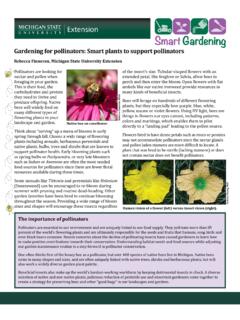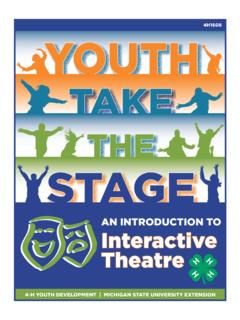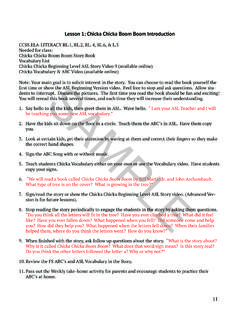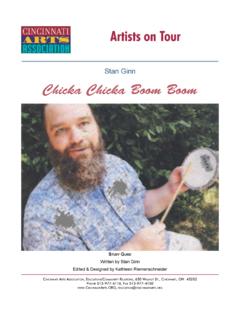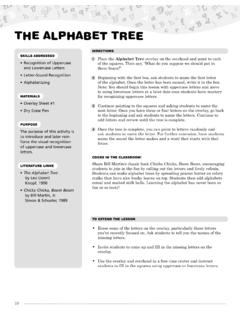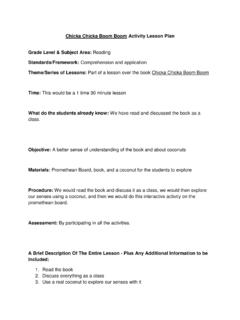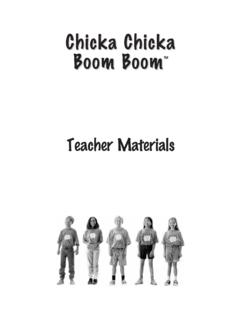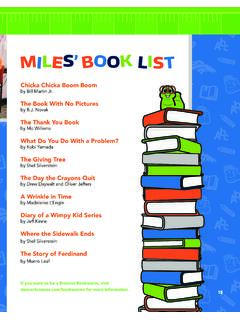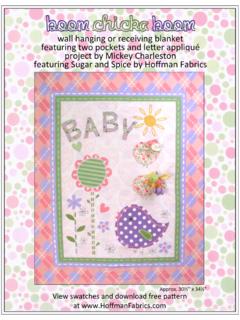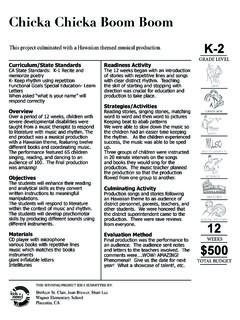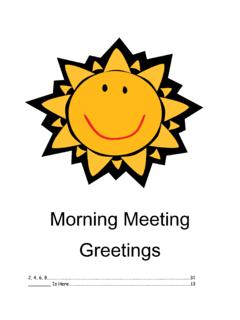Transcription of Chicka Chicka Boom Boom - Home | MSU Extension
1 Chicka Chicka boom boom By Bill Martin Jr. and John Archambault In this rhyming book, all of the lower case letters of the alphabet race to the top of a coconut tree. When the tree bends and they all come tumbling down, the upper case letters come to help. BEFORE READING: Show the children the front of the book. Ask them to guess what the book is about. Ask them what letters they see on the back of the book. Ask them if they know what kind of tree is on the front of the book. WHILE READING: Stop at any time if there is something you or the children would like to talk about. Ask them questions so that they can connect what is happening in the book to things they already know about. Try some of these ideas: Where are the letters going? Who runs to the coconut tree when the letters fall down? Have you ever fallen and hurt yourself? What happened? AFTER READING: Spend some time talking about the story. Ask the children things like: Why wasn t there enough room for all of the letters?
2 What happened to the letters when they all tried to fit? What funny words did you hear in the story? Read this book several times to the children. Hearing the same story again and again helps them learn new words and understand the ideas they hear better. Each day, pick a different ac-tivity to do with the children after reading Chicka Chicka boom boom . MSU is an affirmative action, equal opportunity employer. Michigan State University Extension programs and materials are open to all without regard to race, color, national origin, gender, gender identity, religion, age, height, weight, disability, political beliefs, sexual orientation, marital status, family status or veteran status. MATH AND SCIENCE Grow your own tree. Soak a paper towel in water and then put it in the bottom of a cup. Put a bean in the paper towel and water it. Place the cup on a window sill or table where it will get sun. Water the paper towel every day so that it stays moist, and see if a sprout begins to grow.
3 Help the children write a journal that describes how the seed changes. READING READINESS Ask the children to repeat the words Chicka Chicka boom boom , will there be enough room? as you read the story together. MUSIC AND MOVEMENT Move to the words you read in Chicka Chicka boom boom . Pretend to climb to the top of the tree, stomp your feet when you ready Chicka Chicka boom boom and wiggle your hips when you read Will there be enough room? Act out as many phrases as you can in the book. MOTOR SKILLS Have the children trace the letters from the labels on food containers in the cupboards with their fingers. Say the letters out loud while you are tracing them. You can also take the label off the can, or cut the letters out of the cardboard, so they can try tracing on a blank piece of paper. Let them cut the letters out with scissors when they are done. THINKING SKILLS Put four socks in a row on the table or floor in front of you. Take one sock and move it away from the rest.
4 Ask the children which pile has more in it and how they know. Take one more sock away so that there are two piles with two socks each. Ask the children to tell you which pile has more, or if the piles are the same. Add more socks and switch them from pile to pile. Have the children decide which pile has more, which has less and why. ART Go outside and collect different kinds of leaves. Put them on a hard surface one at a time, and place a piece of paper on top. Rub a crayon across the paper (which is on top of the leaf) to make a design on your paper. Compare the different designs that the leaves make. PRETEND PLAY Pretend to be a farmer or gardener. Take turns being the seed by curling up in a ball on the floor. The farmer or gardener can prepare the ground with a pretend rake, plant the seed, pat the seed with dirt, and pretend to water it. The seed will sprout from the floor and become a plant. See how tall you can grow! For more information visit.
